16 Common Types of Butterflies in Pennsylvania (with Pictures)
-
Ed Malaker
- Last updated:
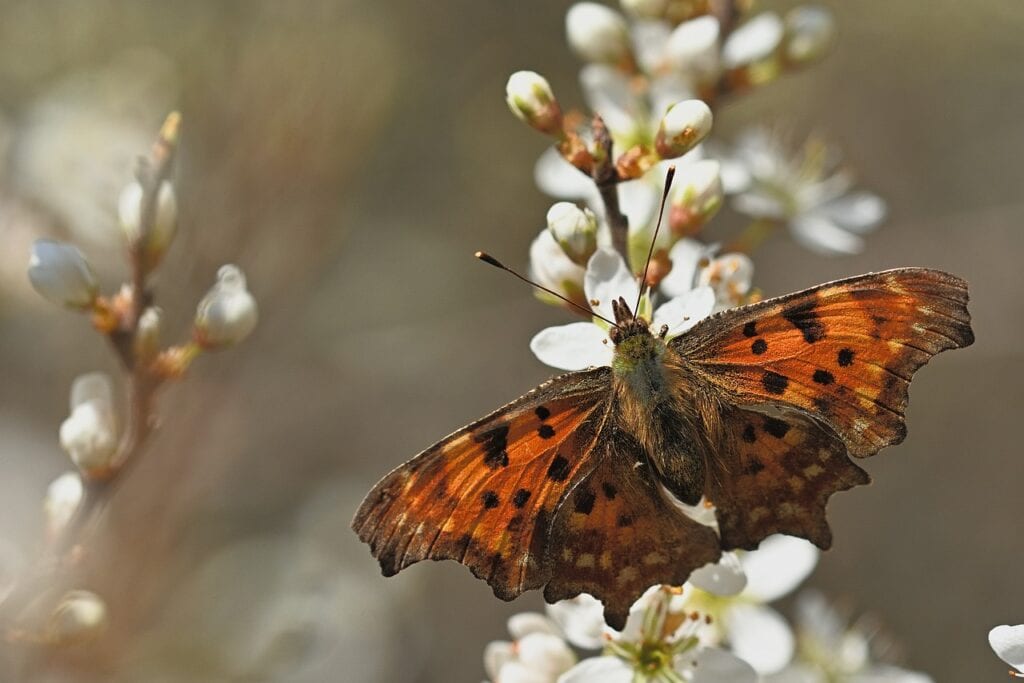
Pennsylvania has plenty of wooded areas and open fields that butterflies like to visit, and the many varieties in the state can keep any butterfly watcher busy. If you would like to learn more about the various butterflies that you can find in this state, keep reading as we present you with a list of the most popular and abundant kinds.
The 16 Common Types of Butterflies in Pennsylvania
1. American Snout Butterfly

- Wingspan: 1.5–2 inches
The American snout butterfly is a unique butterfly with large mouth parts that look like the stem of a leaf. Its brown-mottled appearance helps complete the camouflage. Look for these butterflies on tree branches, where they will be attempting to hide. Adults get their nectar from asters, dogwood, and goldenrod, among others.
2. Baltimore Checkerspot Butterfly

- Wingspan: 1.75–2.75 inches
The Baltimore checkerspot butterfly is an easy-to-identify species that you can find anywhere in Pennsylvania. It has dark brown or shale wings, with orange spots along the edges and white spots on the inside. The caterpillars will be around Japanese honeysuckle, arrowwood, false foxglove, and other plants, while the adults will look for milkweed and wild roses.
3. Cabbage White Butterfly
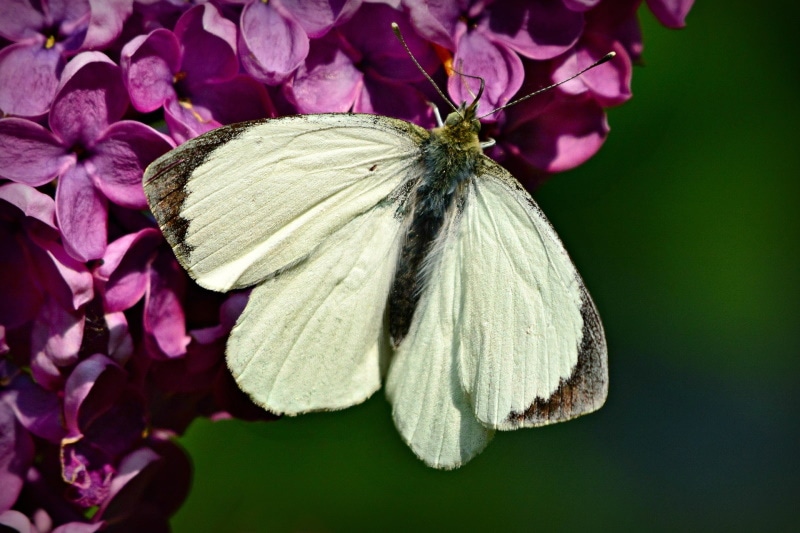
- Wingspan: 1.25–1.75 inches
The cabbage white butterfly has a light tan, almost white, color with a small black patch on the wings. It is a common visitor to gardens, so spotting one should not be difficult, but it will eat your cabbage, radishes, and other plants.
4. Comma Butterfly

- Wingspan: 1.75–2 inches
The comma butterfly is a medium-sized butterfly with angular notches on the forewings and a deep orange color with black spots. The underside of the wings resembles a dried leaf, which the butterfly uses for camouflage when it is not feeding or breeding. There is also a silver mark on the underside of the rear wing in the shape of a comma, which is how it gets its name. These butterflies tend to stay in wooded areas where their natural defenses are more effective. You will often find them near rotting fruit, dandelions, and butterfly bushes.
5. Eastern Tiger Swallowtail
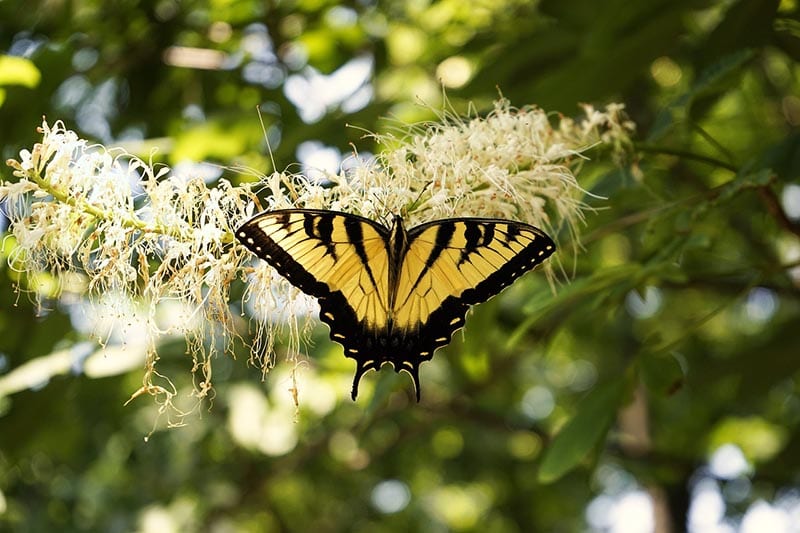
- Wingspan: 3.1–5.5 inches
The eastern tiger swallowtail is native to the eastern United States, so it shouldn’t be hard to find one in Pennsylvania, especially since it has a large wingspan that can reach 5.5 inches or more. The males are yellow with black tiger-like stripes on the wings, which give the butterfly its name. The females look similar and are larger but have tan wings instead of yellow. They are easy to see during the day, but they like to fly high in the sky. Look for them around red or pink flowers.
6. Eastern-Tailed Blue Butterfly

- Wingspan: 0.75–1.25 inches
The eastern-tailed blue butterfly is an attractive variety. It has white highlighting around the edges of the wings and a blue upper side. It likes to feed on seeds and flowers, especially legumes, and you will often find it in open areas with plenty of sunlight.
7. Great-Spangled Fritillary
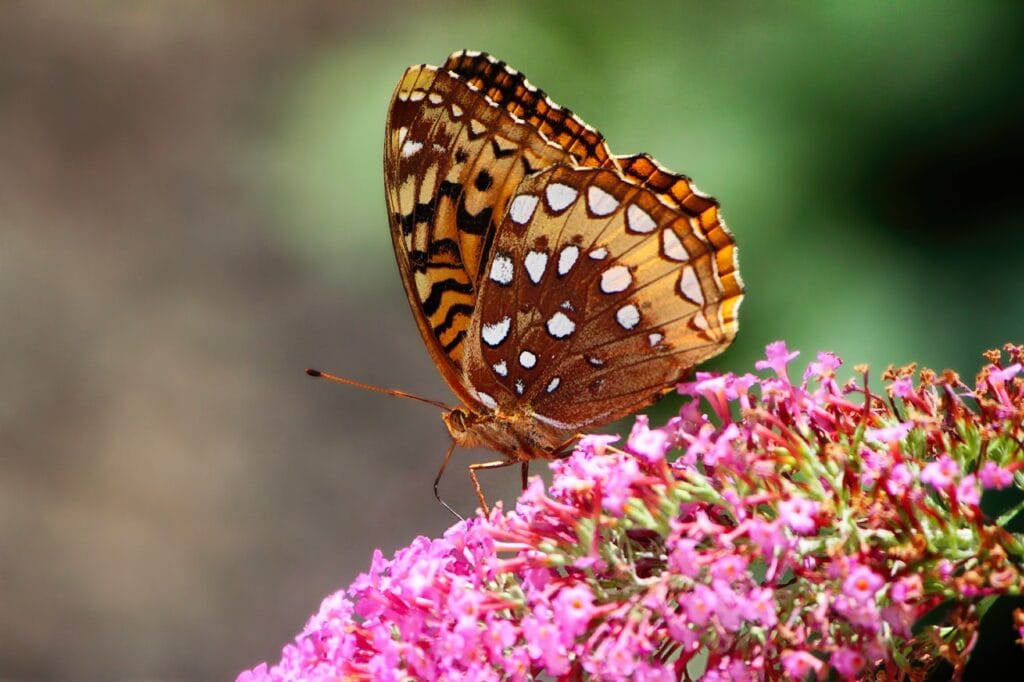
- Wingspan: 2–3 inches
The great-spangled fritillary is a medium-sized butterfly with yellow-brown wings with black spots and highlights. It often visits backyard gardens, and you can see it throughout the day as it looks for a mate. You will also usually find these butterflies hovering around thistle and dogbane, where they like to get nectar.
8. Monarch Butterfly

- Wingspan: 3.5–4 inches
Monarch butterflies are among the most popular butterflies in the United States, with their orange wings, black stripes, and white spots. You can often find them around milkweed and other domestic wildflowers, but their numbers are declining due to pesticides and habitat destruction.
9. Mourning Cloak
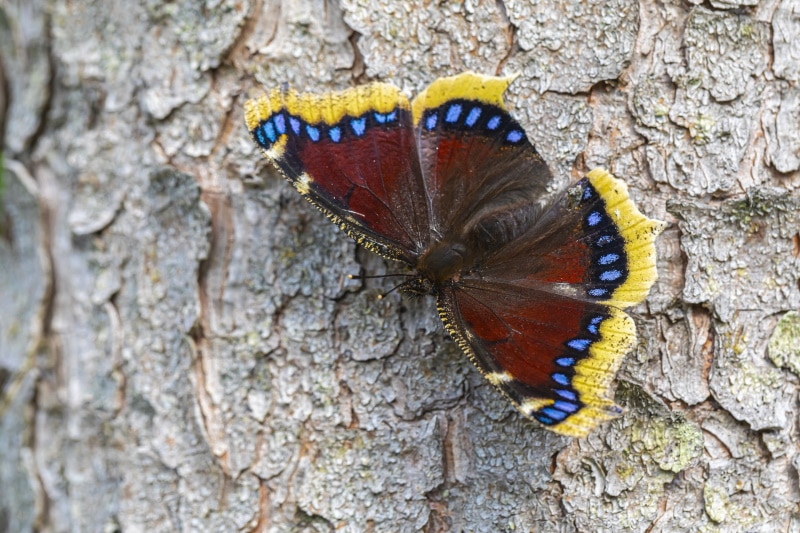
- Wingspan: 2.25–4 inches
The mourning cloak butterfly is an attractive species. It has a light tan or yellow outline around the edges of the wings. Inside the outline, the wings are a deep red with blue spots. You will often see these butterflies near rotting fruit, but they also like the butterfly bush, milkweed, pussy willow, and others.
10. Orange Sulphur
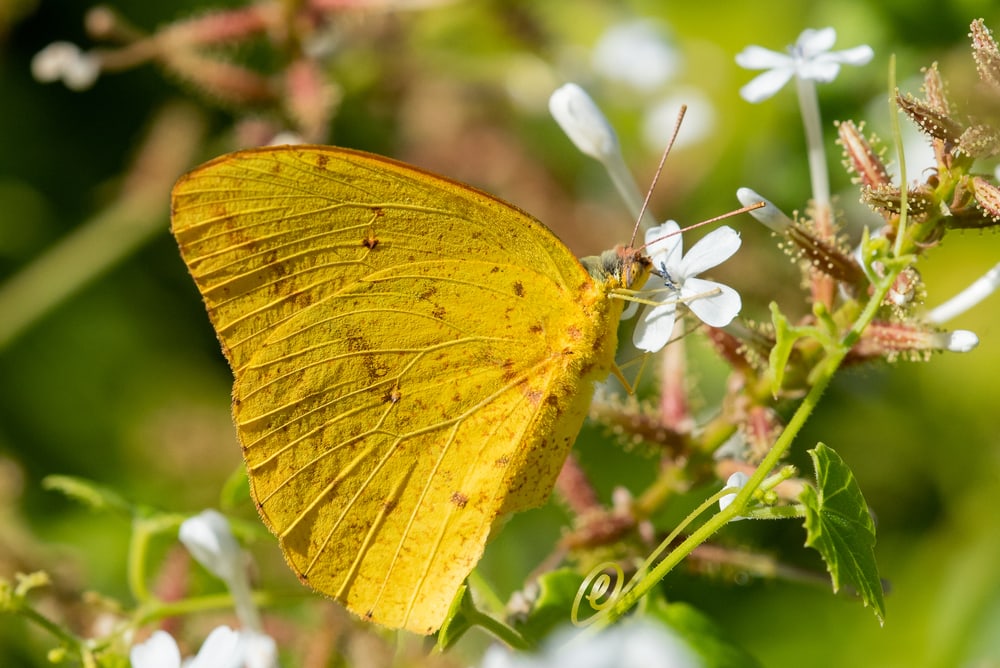
- Wingspan: 1.5–2.5 inches
The orange-sulphur butterfly is common across much of the United States, including Pennsylvania. The wings are orange, yellow, or green, with a large orange patch that gives it its name. These butterflies are a little hard to find because they are more active at night, but you can typically see them around alfalfa, clover, and pea plants.
11. Pearl Crescentspot
- Wingspan: 1–1.5 inches
The pearl crescentspot can also be called the pearl crescent, and you can find it anywhere in the United States, including Pennsylvania. It has similar colors to the monarch butterfly, but the pattern is different. You will usually see these butterflies in open grassy areas across the state, where they tend to forage on thistles and aster.
12. Question Mark Butterfly

- Wingspan: 2.25–2.75 inches
The question mark butterfly is similar to the comma butterfly in many ways. It has angular notches on the forewings and deep orange color with dark spots on the topside of the wings. The underside is dark brown and resembles a dried dead leaf. A small silver mark on the underside of the hind wings has the shape of a question mark, giving the butterfly its name. Look for it around aster and rotting fruit.
13. Red-Spotted Purple Butterfly

- Wingspan: 3–3.5 inches
The red-spotted purple butterfly is an extremely attractive butterfly that you can find across Pennsylvania. It has blue wings that fade to black toward the front of the body. It gets its name from the orange to red spots that it has near the tip of its forewings. These butterflies are easy to find in woodlands along streams and other water sources, especially if there are aspen, poplar, wild cherry, black oak, or several other types of trees nearby.
14. Silver-Spotted Skipper
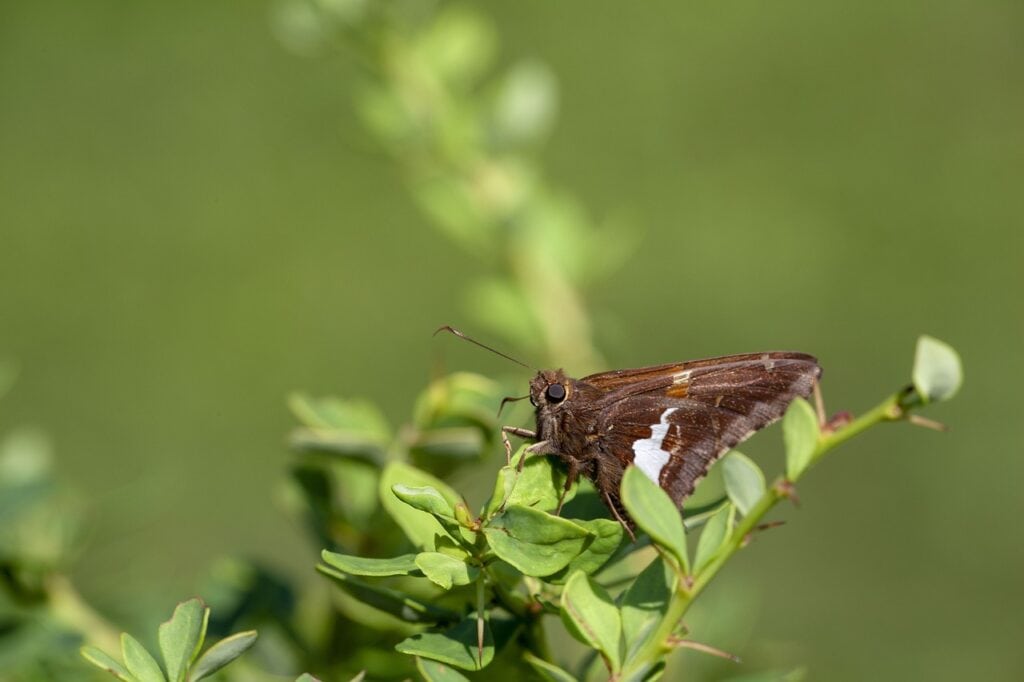
- Wingspan: 1.75–2.5 inches
The silver-spotted skipper is a common butterfly in Pennsylvania, and you can identify it by its dark brown wings with a large white patch. It’s hardy and can live happily in different habitats as long as there are plenty of flowers.
15. Viceroy Butterfly

- Wingspan: 2.5–3 inches
The viceroy butterfly looks extremely similar to the monarch, with only slight differences in the pattern, and a beginner butterfly watcher might have trouble telling the difference. However, they tend to be smaller. Some scientists believe that it mimics the monarch because the latter doesn’t taste good to predators, so it uses the similarity as a defensive mechanism. You will often find these butterflies around fruit trees, aspens, willows, and poplars, and they get their nectar from a wide variety of wildflowers.
16. Zebra Swallowtail
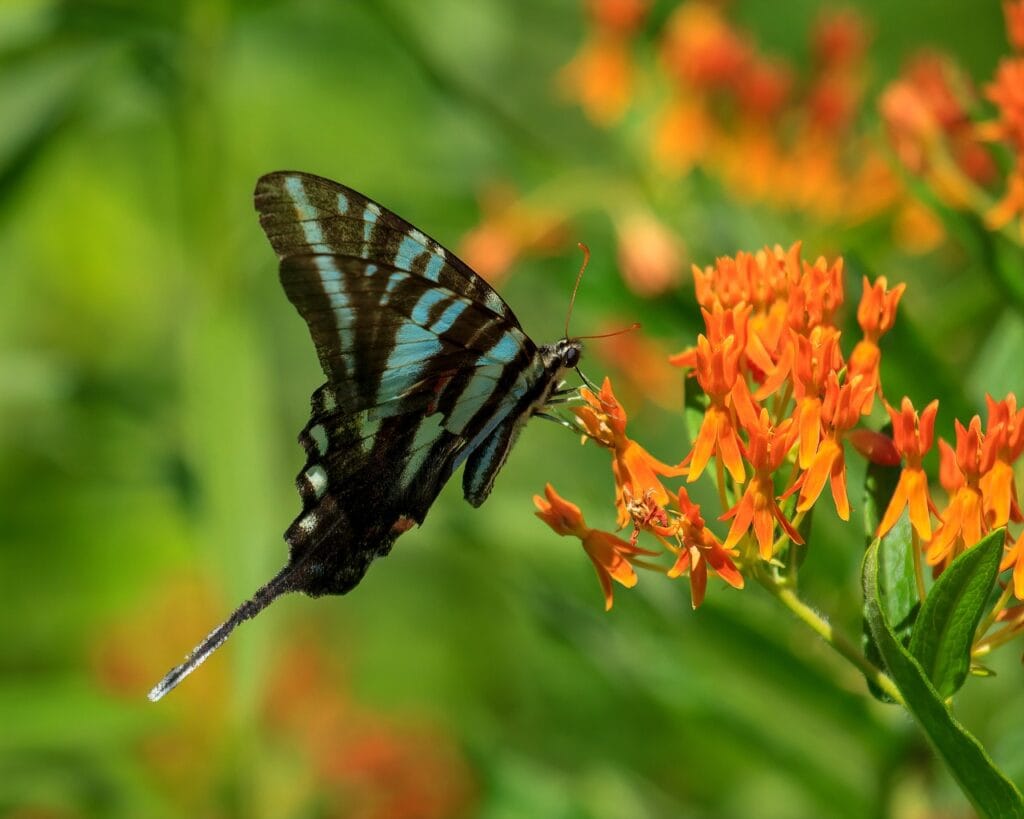
- Wingspan: 2.5–4 inches
The zebra swallowtail is an eye-catching variety that gets its name from the zebra-like pattern on the wings. It is usually white and black, with a red spot on the body that is easy to see from a distance. Look for these butterflies around rotting fruit, dogbane, legumes, and many wildflowers.
Summary
There are several butterflies to find in Pennsylvania, most of which are attractive and fairly abundant. We recommend starting with the silver-spotted skipper if you are a beginner since they are quite common. Also, try to find the monarch and its imitator, the viceroy. These butterflies have a familiar color and pattern that is easy to spot from a distance. If you are looking for something more challenging, try to find commas or question mark butterflies, as they can be hard to see through the camouflage.
Featured Image Credit: Jürgen, Pixabay
Contents
